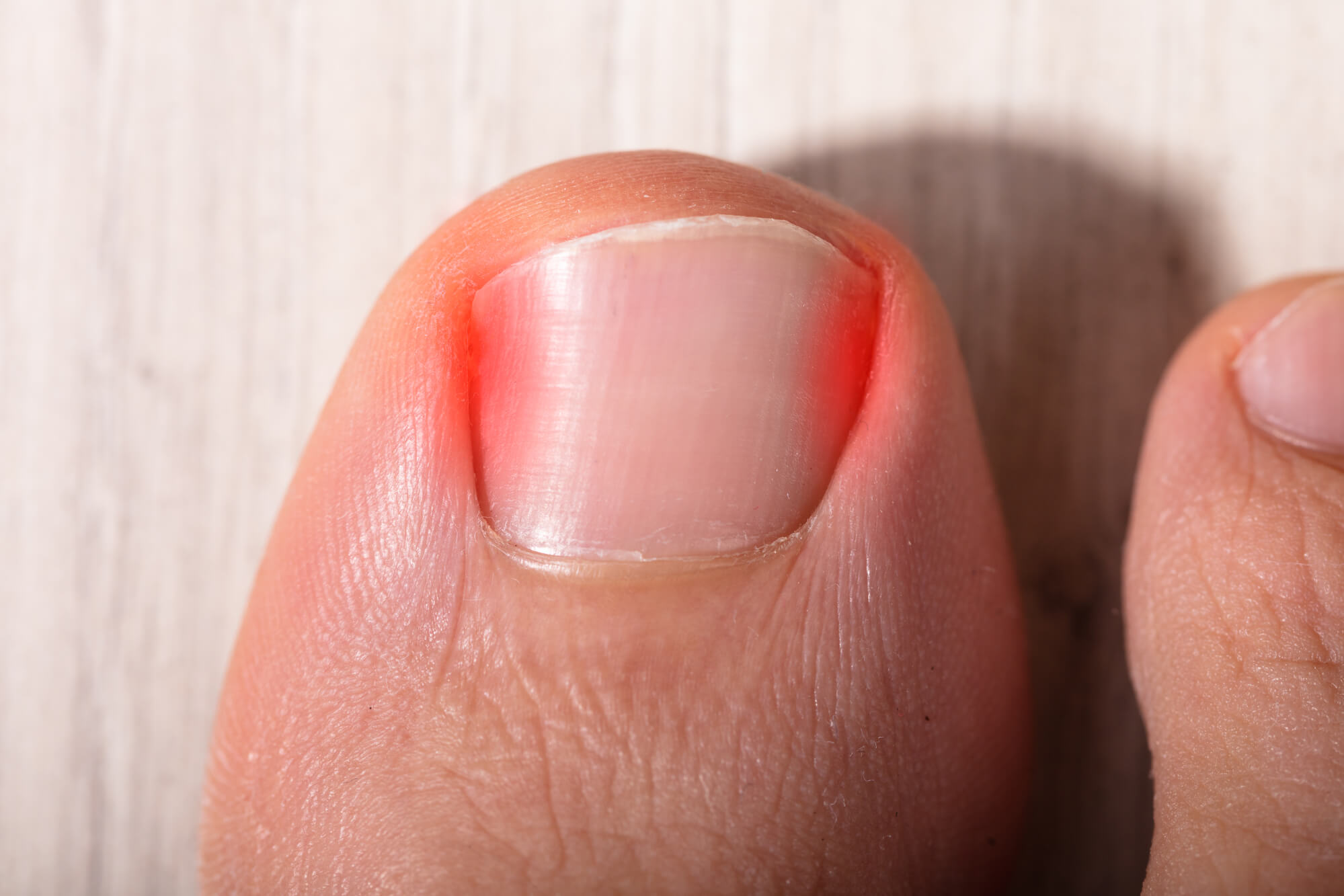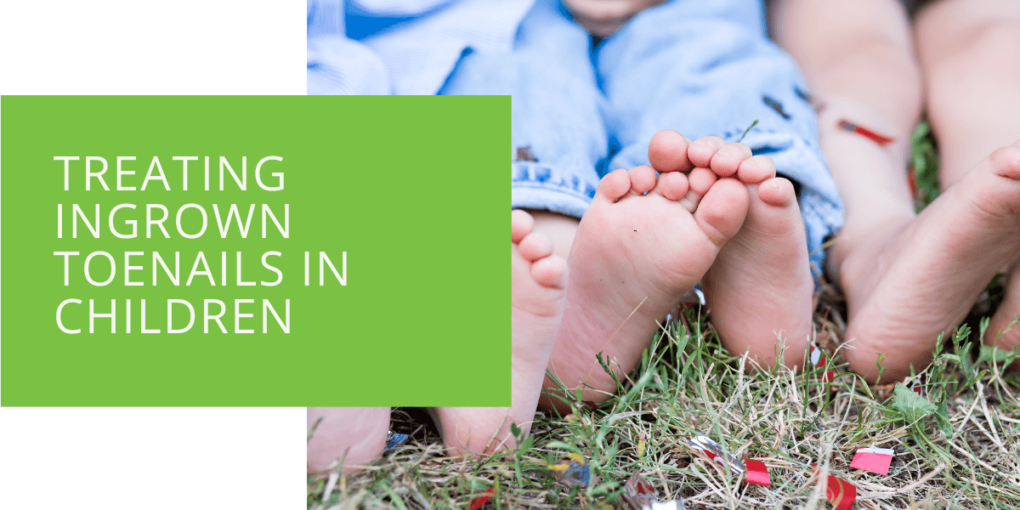Treating Ingrown Toenails in Children
Ingrown toenails can be a painful and uncomfortable problem for children. As a parent or caregiver, it's important to know the causes, symptoms, and treatment options for ingrown toenails in children. In this article, we'll discuss expert tips and advice from podiatrists on ingrown toenails in children.
Causes of Ingrown Toenails in Children
Ingrown toenails in children are typically caused by improper nail trimming, tight footwear, or injury. When a toenail is cut too short or not straight across, it can grow into the skin around the nail bed, causing irritation, redness, and swelling. Tight shoes can also pressure the toes and cause the nail to grow into the skin. Injuries to the toe, such as stubbing or dropping something on it, can also lead to an ingrown toenail.
Symptoms of Ingrown Toenails in Children
The symptoms of ingrown toenails in children may include pain, redness, swelling, and pus around the ingrown nail. The skin around the affected toe may be red and swollen, and the child may limp or have difficulty walking. If left untreated, ingrown toenails in children can lead to complications like infection.

Treatment Options for Ingrown Toenails in Children
When a child has an ingrown toenail, several treatment options are available. The type of treatment recommended will depend on the severity of the problem. Here are some common treatment options for ingrown toenails in children:
Conservative Treatments
Conservative treatments for ingrown toenails in children are typically recommended for mild to moderate cases. These treatments are designed to relieve pain and swelling, reduce the risk of infection, and encourage proper healing. Some conservative treatments for ingrown toenails in children include:
Soaking the Foot in Warm Water
Soaking the affected foot in warm water with Epsom salts can help reduce pain and swelling and promote healing. To do this, fill a basin with warm water and add Epsom salts according to the instructions on the package. Soak the affected foot for 15 to 20 minutes, two to three times daily, until the symptoms improve.
Applying Antibiotic Ointment
Applying an over-the-counter antibiotic ointment to the affected area can help prevent infection and promote healing. After soaking the foot in warm water, dry it thoroughly and apply a small amount of the ointment to the affected area. Cover the area with a sterile bandage and change it daily until the symptoms improve.
Proper Nail Trimming
Proper nail trimming is essential for preventing and treating ingrown toenails in children. Trim the toenail straight across and avoid cutting it too short. Also, make sure to use clean and sterilized clippers. Avoid using scissors or other tools that may tear the nail or damage the surrounding skin.
Proper Footwear
Choosing shoes that fit properly and do not put pressure on the toes is important for preventing ingrown toenails in children. Make sure your child's shoes are comfortable and fit well. Avoid shoes that are too tight or loose, as they can cause rubbing and pressure on the toes.
Surgical Treatments
Surgical treatments may be necessary in more severe cases of ingrown toenails in children. These treatments are designed to remove the affected portion of the toenail or the entire nail to allow the skin to heal properly. Some surgical treatments for ingrown toenails in children include:
Partial Nail Avulsion
Partial nail avulsion is a surgical procedure in which a portion of the affected toenail is removed to allow the skin to heal properly. A local anesthetic is used to numb the area around the nail during the procedure. Then, the podiatrist will remove the affected portion of the nail and apply a topical antiseptic to the area. The remaining nail will be left intact and allowed to grow over time.
Total Nail Avulsion
Total nail avulsion is a surgical procedure in which the entire toenail is removed to allow the skin to heal properly. A local anesthetic is used to numb the area around the nail during the procedure. Then, the podiatrist will remove the entire nail and apply a topical antiseptic to the area. The toenail will eventually grow back over time.
It's important to note that surgical treatments are typically reserved for severe cases of ingrown toenails in children that do not respond to conservative treatments. These procedures are performed by a qualified podiatrist and may require a recovery period afterward.

Tips for Preventing Ingrown Toenails in Children
Preventing ingrown toenails in children can be done by following these tips:
- Proper nail trimming: Trim your child's toenails straight and avoid cutting them too short.
- Proper footwear: Choose shoes that fit properly and do not pressure the toes.
- Soak the foot in warm water: Soaking the affected foot in warm water with Epsom salts can help prevent and treat ingrown toenails.
- Wear clean socks: Wearing clean socks made of breathable materials can help prevent infection and sweat buildup around the toes.
When to Make an Appointment with a Podiatrist
If your child has an ingrown toenail that is painful, swollen, and showing signs of infection such as pus or redness, it's important to make an appointment with a podiatrist. A podiatrist can diagnose the problem and recommend the best treatment for your child's needs.
Conclusion
Ingrown toenails in children can be a painful and uncomfortable problem, but by following the tips and treatment options discussed in this article, you can help your child avoid and treat ingrown toenails. Always seek medical attention from a podiatrist if your child is experiencing pain, swelling, or signs of infection around their toenails.
In addition, it's important to teach your child proper foot care habits from a young age. This includes regularly washing and drying their feet, wearing properly-fitting shoes, and avoiding injury to their toes. Taking a proactive approach to foot care can help your child maintain healthy and pain-free feet for years to come.
If you suspect your child has an ingrown toenail, don't hesitate to make an appointment with a podiatrist. Your child can return to an active and happy life with proper treatment and care.

